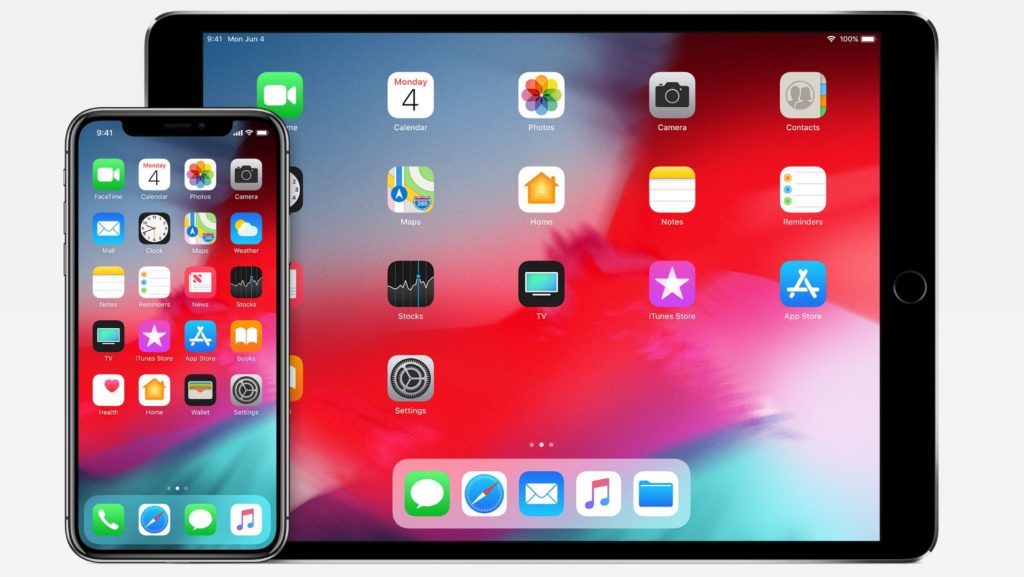Marketers will find opportunities to connect with users through enhanced AR capabilities, new notifications options and more.
On September 17, Apple will release iOS 12, a big update to its mobile operating system that’s packed with a lot of useful user features that are also a boon to marketers.
Let’s dig right in.
Changes to notifications make it easier for users to opt in — and opt out.
The update gives users more control overall — adding new modes to Do Not Disturb and offering users ways to manage their time online. But those changes give marketers a real opportunity to better engage with their customers, according to Mike Herrick, senior vice president of product and engineering at customer engagement company Urban Airship.
In iOS 12, users can control how notifications are delivered. Notifications will be grouped by app instead of chronologically. And users will able to choose what type of delivery they want — prominent, which displays on the home screen with an audible alert; quiet, which slips into the user’s notification center without an alert; or none.
Herrick says that marketers using iOS 12 can offer users of their app a trial of quiet notifications that do not require an opt-in. In order to shift that provisional quiet message to a prominent one, marketers must create compelling and relevant content that earns the upgrade.
AR becomes more accessible and easier for marketers to create.
Apple worked with Pixar to create a new open format called ‘usdz,’ which makes it easy to put AR anywhere throughout the OS, including apps like Messages, Safari, Mail, Files and News. The ARKit 2 gives developers new tools to create shared experiences, and ones that can be saved and resumed at that point later.
Michal Koor, CEO of developer Vectary, whose 3D design kit lets “anyone” create AR in iOS 12, says that Apple’s AR advances will provide “easy AR content creation that will really let the AR content go mainstream. Until now it was a domain of skilled developers and designers only … This is a great opportunity for e-commerce owners, bloggers or even every iMessage user.”
No need to know machine learning to reap its benefits.
Apple says its Core ML 2 will process models faster than ever before and provides an easy platform on which to build and train models using the new Create ML framework, with no machine learning expertise required.
User-friendly features make for happier consumers.
Apple is making some big boasts about speed updates — such as a swipe-to-Camera speed increase of up to 70 percent faster, and an app launch of up to two times faster. If true, consumers will be clicking and scrolling faster than ever before. But with additional data privacy controls for users in the wake of Europe’s General Data Protection Regulation (GDPR) and other laws, marketers need to be savvier than ever before.
Marketers should be aware of some security enhancements to Safari that prevent Share buttons and comment widgets from tracking users and block advertisers from collecting device data.
Even the fun features could spell opportunity for creative marketers.
Updates to Animojis, the addition of personalized Memojis and new camera effects provide users an opportunity to play and marketers a chance to bond. Coming up with ideas that spotlight these features should help to attract younger consumers who already use them through Snapchat and Instagram.
The release also includes other new features such as group Facetime and Siri Shortcuts, which gives Siri the ability to pair users’ daily routines with apps to suggest convenient shortcuts right when they’re needed.
“As usual, with a new release of iOS there are more than a few things to get excited about,” said Michael Tidmarsh, chief technology officer for Oglivy.
“A couple that stand out from the perspective of helping our clients share real differentiated, contemporary experiences are the extension of Siri’s capabilities through the ShortCut API and, of course, ARKit 2.0, and everything it offers by way of next-generation augmented reality,” he said.
He also praised two of the standout features — persistence (being able to leave virtual objects around the world for others to explore) and shared experiences (multiple people sharing the same experience).
Prioritize by resources
The same thing applies to resources.
Last year, we recommended that Client A transition their site from HTTP to HTTPS. They were onboard, we were excited, and then we realized they didn’t have anyone to manage the process.
Moving a site to HTTPS isn’t a small feat. It can be difficult, can result in errors, and, as I’ve seen several times now, it can result in significant organic traffic loss (Thanks, Google). We couldn’t take the risk. We held onto that recommendation for almost a year until they had the right people in place to ensure a smooth transition. Everything was switched over correctly, and the site is seeing a nice bump in traffic.
Let’s look at another example. Client B wanted our help writing content but didn’t have anyone to actually edit, approve or manage the process, resulting in a backlog of unpublished blog posts. Do you know who unpublished blog posts help? No one.
Instead, we decided to switch to blog refreshes. We identified a list of older blog posts that were ripe for an update and starting updating the content. We didn’t need extensive review, and we had the ability to implement the changes. As a result, blog traffic started picking up, and we were able to show improvements without new content.
At the end of the day, SEOs are often reliant on other departments to be successful. We have to be aware of available resources and adjust when necessary.
Align recommendations with business goals
It seems like an obvious thing to align with business goals. Make sure you are driving results that impact the overall organization. Are you actually doing that? Or are your recommendations simply geared toward improving organic traffic and revenue?
I’ll be honest. I have been 100 percent guilty of providing recommendations that help the SEO program but don’t necessarily align with organizational goals. It’s an easy trap to fall into.
Take Client B mentioned above. At the onset of the program, we identified our core set of keywords and the types of content we would need to drive visibility. Everyone was in agreement until we actually built the content.
Yes, they understood they needed content, but they felt it really didn’t fit with their existing campaigns and current strategy.
So there the three blog posts sat — more unpublished content. Until a few months later.
We started asking more questions, getting integrated into their demand-gen calendar, and it turned out that those three unpublished blog posts fit perfectly into an upcoming campaign.
It was an easy thing to overlook. The content made sense for the SEO program, but it wasn’t necessarily a fit for them at the moment.
Make sure you understand not only the objectives of the team responsible for SEO but also the objectives of the supporting teams and the business as a whole.
Don’t jump at the latest thing
Last month, I gave a presentation on common SEO mistakes people make. One of those things is overreacting to Google and its many updates and changes.
Look, I get it. When Google tells us to make our sites secure or it’ll start warning users, we should listen. But when Google tells us to make our site secure and then can’t figure out how to differentiate between the secured and non-secured versions, it’s a bit frustrating.
Remember authorship? Google Plus? How about 300-character meta descriptions? That was a fun minute.
We have to ensure that what we recommend makes sense for our business. We can’t provide recommendations simply because Google said so.
Now, I’m not saying your site shouldn’t be secure or shouldn’t be fast and mobile-friendly. But what I am saying is that maybe your mobile traffic is fairly insignificant, so you don’t need to spend 90 percent of your time focused on a mobile strategy.
Here’s another example.
When accelerated mobile pages (AMP) was launched, it seemed like an easy enough thing to do. Sure, it was built for publishers, but Yoast made it simple, and as a result, it became a part of our standard technical recs. But what about those not on WordPress? What about those with a custom content management system (CMS) who would need to hire a developer to build out AMP functionality? Was it worth it?
No, it wasn’t. In this case, the webmaster didn’t publish a ton of new content, and their overall mobile traffic numbers were fairly small. Even more telling, mobile search results for their core terms didn’t contain AMP results.
Google said, “Jump,” but in this case, there was no reason for us to jump.
Final thoughts
At the end of the day, success is a moving target, and we live in a world of “What have you done for me lately?” A program can change in a year, or even in six months. As SEOs, we need to continue measuring, adjusting and keeping our strategy aligned with the changing landscape.
Remember, while you may want to fix everything, that isn’t always an option. Help your team be successful by prioritizing their tasks, helping them understand what is going to have an impact and providing recommendations that are built with business objectives in mind.
Opinions expressed in this article are those of the guest author and not necessarily Search Engine Land. Staff authors are listed here.



